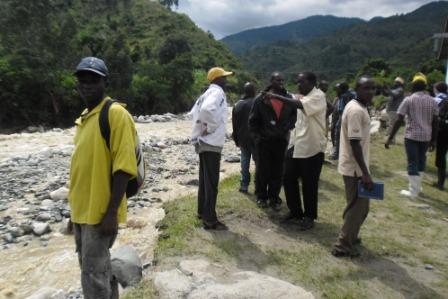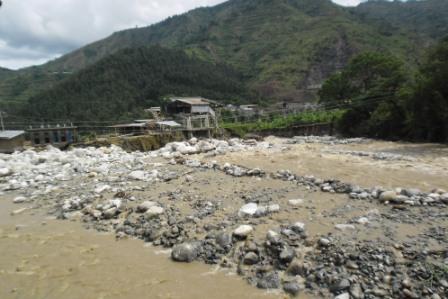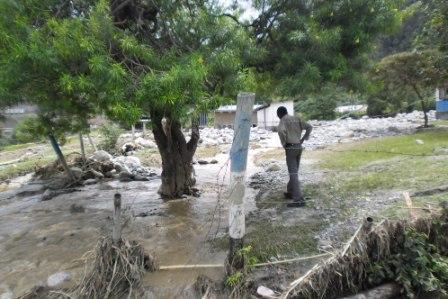On the first day of the Quarter Three meeting in Uganda, we (fellows) were asked to dream for a minute and share our dreams beginning with perhaps the most consequential and historical line of all time– I have a dream…by Martin Luther King Jr.

We all had and shared big dreams. I am an environmentalist at heart and I dream of a world where humanity respects the environment we live in enough to give it a chance to nourish us.

“I have a dream that I am a part of something big that inspires goodness and the need for humanity to actively participate in creating a world where we not only respect each other but also respect the environment we live in and give it a chance to nourish us,” I shared with other fellows.

Five days later when everyone was settled back at their placement sites and as the world celebrated International Labor Day; parts of Kasese district – where I am placed – were experiencing a heavy downpour.

It was different from usual. The banks of Rivers Nyamwamba and Mubuku burst and ferociously carried with them downstream rocks bigger than cars, uprooted trees and everything else that stood in their way.

Downstream, the old mine town of Kilembe barely survived. The community was torn to pieces. People’s houses and bridges that connected families were washed away. Parts of the historical Kilembe Mines were destroyed too. Kilembe hospital was flooded and parts of it destroyed.

So far eight people have been confirmed dead, 3, 500 people were displaced, 1,000 acres of gardens destroyed and immeasurable amounts of property and livestock destroyed.

It is hard to imagine the extent of the damage until you have been on location. What remains of the old mine town are broken bridges, destroyed houses, uprooted trees, fallen electricity poles and wires, sand, hundreds of big rocks littered everywhere and of course sad faces of people devastated by the aftermath of the downpour.


Like me, some of them are still in disbelief. As I was walked through the destruction a day later, I could not stop wondering about what happened in connection to how we (humans) treat the environment we live in. And how largely because of our actions, Mother Nature reacts the best way she knows how – most times harshly.

Until two days ago, I did not know that the now destroyed mine town of Kilembe was built on a river-path. One of the old men I spoke to as I walked through the rubble said that sad as it may seem, humans were at fault. He said that the rivers were simply reclaiming their rightful territory.


One of my Idols, the late Professor Wangari Maathai once said that Mother Nature can be unforgiving in her revenge and times have proven this. However, even with this knowledge, it is sad to note that a number of survivors are considering resettling back in Kilembe. And government has no plans to resettle people out of the rivers’ natural paths.

Quite often in pursuit of happiness and success, we (human beings) end up destroying the very things that keep us alive especially the environment. We strip so much from it and yet give back so little to allow it to nourish us.


I am a part of ACODEV’s team that is working together with government of Uganda and other national and international NGOs to mitigate the effects of the floods. Of course top of the agenda is addressing the immediate needs of the displaced including provision of clean water, blankets, food, medicines, counseling, health education etc.

And as we look to rebuilding the community of Kilembe, it is my dream that the long term settlement plans are in harmony with Mother Nature. And as a documentations and communications fellow, I am utilizing my expertise to ensure that history does not repeat itself in Kilembe.
